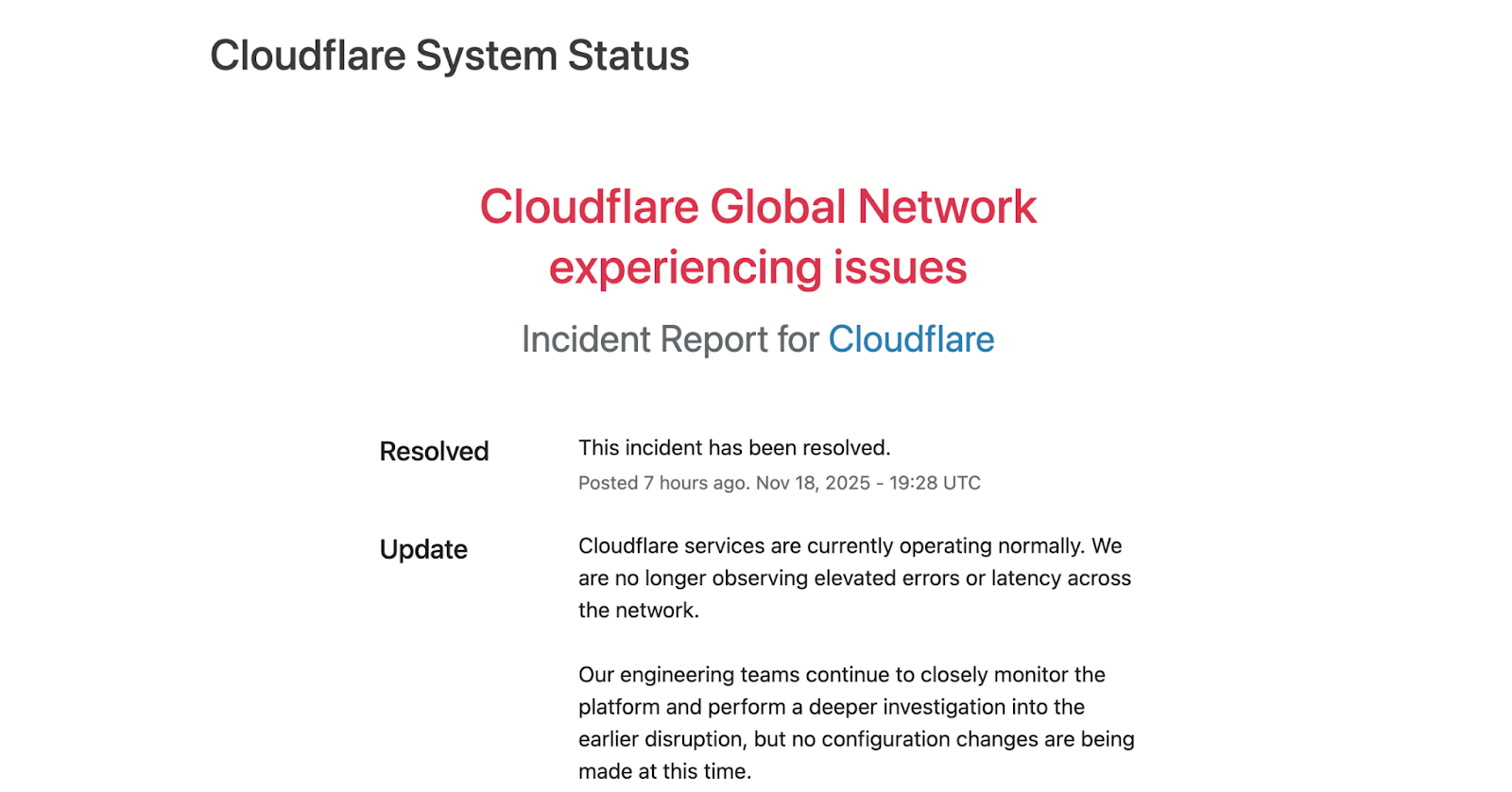Cloudflare Outage Triggers Global Web Disruptions, Exposing Web3’s Single Point of Failure
Cloudflare Outage Triggers Major Internet Disruptions
Recently, a significant number of websites and applications worldwide experienced outages caused by a system failure at Cloudflare, a leading internet infrastructure provider. The incident impacted both Web2 and Web3 services, leaving users temporarily unable to access front-end interfaces or interact with platforms.
Cloudflare’s official statement reported the disruption occurred at 11:48 UTC. Their team resolved the issue quickly and noted:
The issue has been resolved. We will continue to monitor the system to ensure full restoration of services. This episode underscores how a breakdown in the internet’s core infrastructure can instantly affect the entire web, not just a single platform.

(Source: Cloudflare)
Numerous Crypto and Mainstream Platforms Go Offline
During the Cloudflare outage, many users reported that websites’ front ends failed to load. Both Web2 and Web3 platforms were affected, including X (Twitter), Truth Social, Coinbase, Ledger, BitMEX, TMON (TON), Arbiscan, and DeFiLlama.
Some platforms quickly restored operations and confirmed a smooth recovery. BlueSky and Reddit remained mostly unaffected, highlighting that architectural differences can create varying levels of resilience when core infrastructure fails.
Root Cause of the Outage Identified
In a statement to Cointelegraph, Cloudflare clarified that the outage resulted from an internal configuration issue rather than a cyberattack. Automatically generated configuration files responsible for managing threat traffic exceeded anticipated size limits, causing the traffic processing module to fail. This means the problem stemmed from Cloudflare’s own system capacity limits, which were unable to handle an unusual traffic spike.
Web3 Remains Dependent on Centralized Core Infrastructure
This incident exposes an unavoidable truth: decentralized applications still depend heavily on centralized internet infrastructure. Even DEXs, DeFi aggregators, blockchain explorers, and crypto wallets face single point of failure risks if their front-end services depend on Cloudflare.
While on-chain elements may be decentralized, most Web3 user gateways still use Web2 architectures. Until these entry points are decentralized, achieving true censorship resistance and reliability will remain out of reach.
Conclusion
Cloudflare’s large-scale outage has made it clear once again that, despite Web3’s focus on decentralization and censorship resistance, its real-world operations still rely heavily on Web2 infrastructure providers like Cloudflare and AWS. When these infrastructure providers encounter issues, on-chain applications, trading platforms, browsers, and wallet front ends can go offline instantly. This incident reveals that, although Web3 has advanced at the consensus and computation layers, real decentralization does not yet extend to user gateways, front ends, traffic routing, or API services. For true end-to-end decentralization, the industry must transition network infrastructure beyond the Web2 model. It should build a foundation that is more distributed, verifiable, and resilient.
Related Articles

Pi Coin Transaction Guide: How to Transfer to Gate.io

Flare Crypto Explained: What Is Flare Network and Why It Matters in 2025

How to Use a Crypto Whale Tracker: Top Tool Recommendation for 2025 to Follow Whale Moves

2025 BTC Price Prediction: BTC Trend Forecast Based on Technical and Macroeconomic Data

What is N2: An AI-Driven Layer 2 Solution
